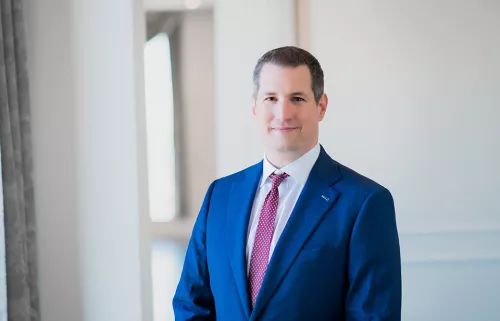Luis Savastano, MD, PhD, joined the Department of Neurological Surgery as an assistant professor in June 2022. He is a surgeon-scientist, inventor, and entrepreneur focused on cerebrovascular neurosurgery and solving unmet clinical needs by translational research and development of new technologies. He is a “hybrid” cerebrovascular neurosurgeon, specializing in the microsurgical and endovascular treatment of ischemic and hemorrhagic stroke.
Before joining the UCSF faculty, Savastano was an assistant professor of neurosurgery and radiology at the Mayo Clinic Rochester, MN. He obtained his MD, PhD from Cuyo National University School of Medicine in Argentina and completed a neurosurgery residency and neurointerventional radiology fellowship at the University of Michigan.
Welcome to UCSF! Can you describe the focus of your lab and share some details on recent projects?
My lab brings together physician-innovators, biomedical scientists and engineers to develop new knowledge, tools, and techniques in neurosurgery. We strive to create the future of the field and bring new standards of care for cerebrovascular diseases by taking unmet clinical needs to the research bench and bringing meaningful solutions back to the bedside.
We have three main areas of focus. The first is understanding how and why carotid plaques rupture and cause strokes. We conducted basic research (including computational fluid dynamic studies, tissue biomechanics, and structural analysis) to determine the mechanism of plaque disruption and are now pioneering intravascular imaging platforms to visualize the clinical phenotypes of vulnerable and disrupted plaques (independently to the degree of stenosis). This work, along with results from a clinical trial to be initiated in collaboration with the NIH, could have major implications for the clinical management of carotid artery disease to prevent strokes, disability, and death.
Our second area of focus is the science of mechanical thrombectomy for stroke. After investigating the complex mechanical interaction of artery-clot-devices and failure modes of stent retrievers and suction catheters, we developed a next generation thrombectomy system that ingests emboli by creating a unique and powerful whirlpool, which is undergoing U.S. clinical trials before the end of the year.
The third and most recent focus has been the development of tools and techniques to use arteries and veins to treat non-vascular conditions.
Through these projects, we have attracted prominent industry partners interested in testing their technologies using our models, keeping our lab at the forefront of medical innovation at the preclinical and clinical level.
How does your clinical practice fit in with your research interests?
My practice is exclusively dedicated to vascular neurosurgery. Half of it is endovascular, treating conditions in the brain, neck, or spine affecting arteries or veins. The other half is open microsurgical cerebrovascular, which focuses on both ischemic and hemorrhagic stroke. My research and clinical practice are heavily intertwined through the bed-to-bench-to-bed paradigm. Visualizing things from the inside (by angiography and intravascular imaging tools) and from the outside (by open surgery) provides a unique perspective of what boundaries can be challenged with transvascular approaches.
What drew you to UCSF?
It was a difficult decision to leave many fantastic colleagues at Mayo Clinic. But UCSF is an unparalleled academic center, and I think it is the right place to build the future of our field. UCSF provides the melting pot where science, healthcare, and industry can come together to transform medicine.
What is the most rewarding part of your work?
Being able to help patients who are in serious trouble is very rewarding, especially in cases where odds are not on their side. The possibility to challenge dogmas and status quo by generating new knowledge, tools and approaches is also a great part of our work, all while training the next generation of colleagues.
What do you consider the next frontier of your field, and how does your research contribute to that vision?
In my opinion, there have been at least two major breakthroughs in cerebrovascular neurosurgery. One was in the 1960s with the introduction of microscopes—being able to see with high magnification and illumination changed the field. There was a second breakthrough in the 1990s and early 2000s with the introduction and explosion of endovascular techniques and tools to treat cerebrovascular conditions. I think that the next breakthrough in the field is going to be using arteries and veins to treat non-vascular conditions, like epilepsy, pain, tumors, paralysis, trauma, and much more. Vessels are natural conduits that we could use to revolutionize minimally invasive surgery. That is a major focus of my lab, and I truly look forward to partnering with the many other researchers and clinicians at UCSF to make medicine better for our patients.

